Going Gradeless: Here’s How We Do It
Grades are so much a part of our own learning experiences and the tools available to teachers today it might be hard to imagine your school without grades. But as many of you already know, it’s possible — and powerful when you can make it happen!
At Quest Forward Academies (in Omaha, NE and Santa Rosa, CA), students create authentic work products — we call them artifacts — to learn and demonstrate skills and knowledge, instead of taking traditional tests. Every day students receive detailed feedback in multiple ways, focused on important aspects of their learning and growth, without receiving grades on any of their work.
Focusing on Feedback, Not Grades
Our alternative to grades on assignments is a three-part feedback model that emphasizes both learning performance and skill growth. The model includes:
1. Artifact Feedback: Students receive feedback on their work products, or artifacts, and work processes across four dimensions:
- Learning
- Timeliness
- Appropriate Effort
- Support from Others
2. Skills Checks: Students and their teachers regularly reflect on students’ development of 12 learning skills.
3. Engagement Observations: Teachers observe in-class student engagement daily (on a scale from low to high) to identify challenges that prevent learning and growth. In Quest Forward Academies, engagement is more than class participation. It’s how students prepare, focus, contribute, and invest in their learning.
Teachers at our schools use the Quest Forward LMS (Learning Management System), which enables teachers to provide this structured feedback digitally. Both students and teachers view feedback as well as trends over time. Unlike most LMSs, ours isn’t built around assignments and grades. Instead it is all about projects — we call them “quests” — and feedback. Throughout their learning journey students answer the question, “What skills am I developing throughout this experience?”
While our LMS empowers gradeless learning, it is quite possible to take this kind of approach in any setting — even if grades are required at your school.
Let’s dive into each of these feedback components in more detail:
Artifact Feedback
When I (Ed) first discuss an activity or project with students, I help them to identify the skills and knowledge they will practice and demonstrate. From the start, the focus is on learning, not the grades they can earn. New students want to know exactly what to do to get a good grade, so it can be hard to not give them all the details that they’re used to, but they adjust quickly.
When I provide feedback on artifacts, which range from sketches to outlines to essays, photo stories, or podcasts, to more substantial projects like creating a catapult, I respond to three questions about students’ skills and work processes and one question about the extent to which students demonstrated the learning goals through their work product. I, as well as other Quest Forward Academy teachers, use sliding scales that intentionally are not precise or tied to numbers, to avoid the reflex of turning feedback into grades. The feedback students receive is frequent and low stakes, meant to help them get a general sense of where they are and what they need to work on.
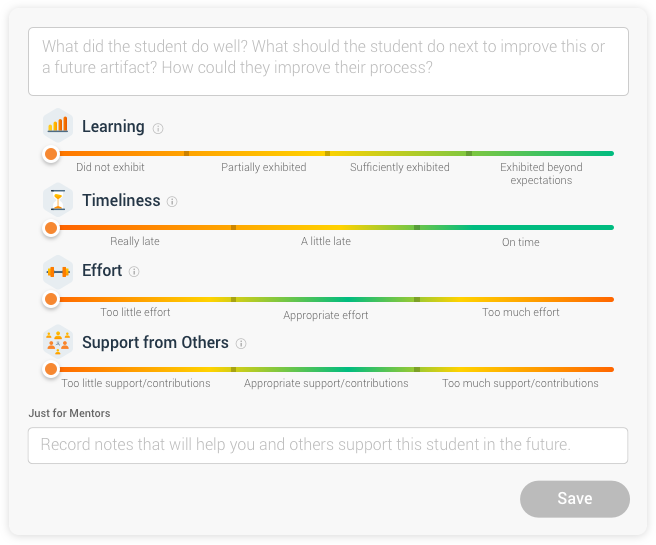
Teachers provide various forms of feedback on every artifact. They provide feedback in person, through inline comments (e.g., Gdoc comments) and via this Artifact Feedback tool in our LMS.
Making the feedback visual so students can quickly review and compare their performance and skills over time has been useful. Instead of giving a grade or percentage, I use the Artifact Feedback tool to collaborate with students to discuss my observations. This makes the artifact feedback meaningful and growth-oriented.
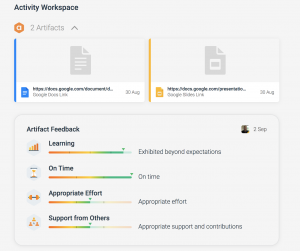
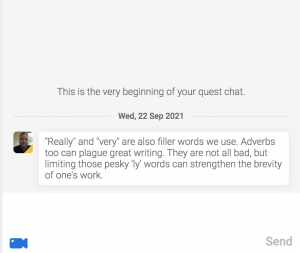
Students can view teachers’ feedback immediately. Teachers and students discuss feedback in person, as well as through the LMS.

Students can view all their artifact feedback for every course all on one screen. It helps to see trends, improvements, and areas needing more attention. This screen is the closest thing teachers have to a gradebook. Instead of grades, it shows student skills and performance on a color-coded sliding scale.
Skills Checks
When students start a new learning activity, I provide them with a “Focus Skill,” one of our 12 Learning Skills, and guidance on how to practice or improve upon the skill. After they complete the activity or create an artifact, students reflect on how they practiced the skill and how well they demonstrated it. I provide feedback by completing “Skills Checks.”
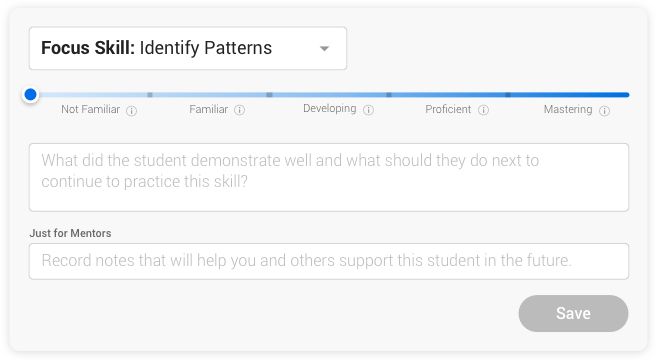
Students and teachers both complete Skills Checks. Teachers can provide written feedback along with the rating on the scale.
The feedback I provide through Skills Checks is helpful for starting conversations with students and working with students to identify actions they can take to improve. Students can see where they are in developing the skill and their growth over time.
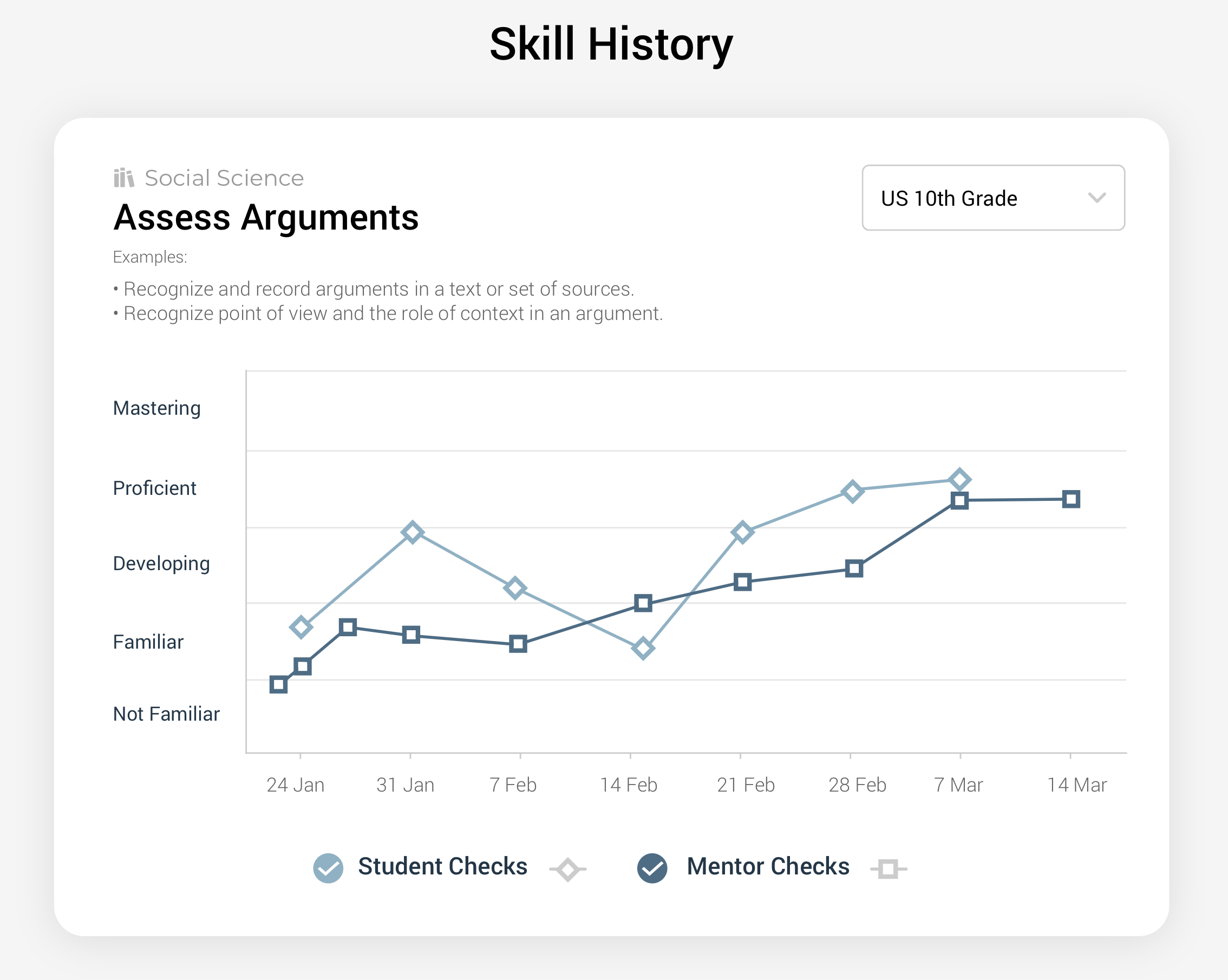
A “Skill History” chart shows results from both student and teacher Skills Checks for each skill in a course (e.g. “Assess Arguments” in Social Science). They can see how their ratings compare, discuss trends, and see changes over time.
While there are many benefits to reflecting on skills, our LMS doesn’t yet provide the perfect solution. For a student to meaningfully select a point on the skills check scale, students require a deep understanding of the skill, the criteria, and expectations for progression. That’s proving to be unrealistic. Opportunity Education, which builds and supports the LMS, and the Quest Forward Academies are working together to refine this experience to make the student reflection component easier and more useful for students and teachers. One way we’re considering doing this is by having students reflect on their confidence with a skill, rather than just assessing their proficiency.
Engagement Observation
By providing students feedback on their engagement, I help them to understand what it means to work hard, learn, improve, and invest in their own learning. Focusing on engagement shifts expectations from compliance and good behavior, which is often the point of a “participation grade,” to students owning their learning. Engagement is so much more than participating. It means coming to class prepared, contributing, asking good questions, and expressing care and interest in their learning process.
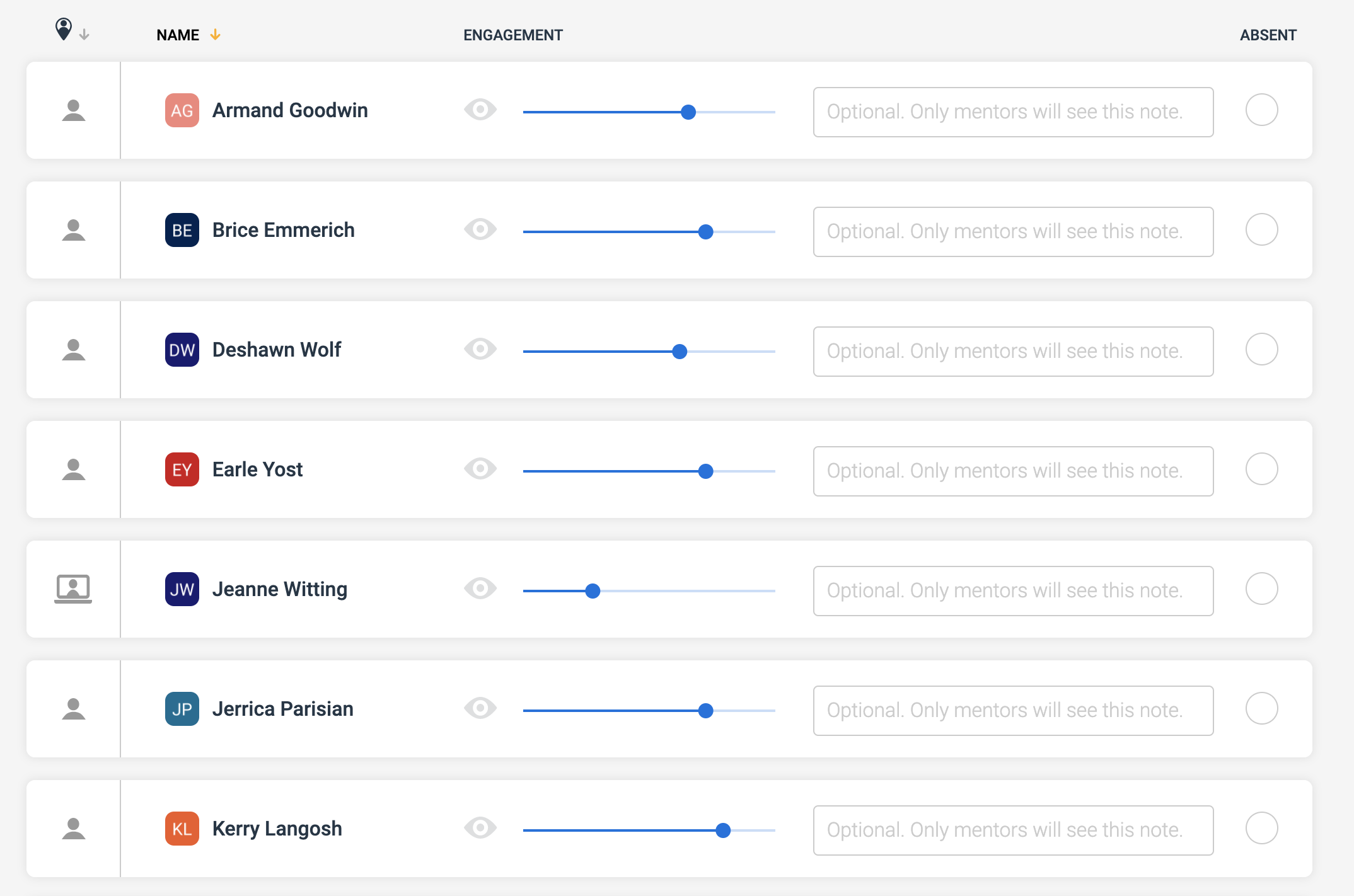
Teachers record student engagement and attendance after every class meeting.

Teachers can view students’ daily engagement in all courses to help them identify any potential problems and to best support students. Some low engagement days are normal. The information across courses can help a teacher support students on a bad day. A steady stream of low engagement suggests a deeper issue worth discussing with other teachers, counselors, the student, and perhaps their caregivers.

Students see their engagement range for each course each week and for each term. Showing the range and not precise data points is intentional. Students can’t easily convert this feedback into points or a grade.
How Teachers and Parents Can Support Gradeless Learning
Here are some simple steps you can take to support grade-free learning, even without the Quest Forward LMS.
1. Focus on skills. Identify the skills you want students to develop and help students understand how the course activities will lead to skills growth. Start with a skill or two per quarter and build in opportunities for students to practice and demonstrate that skill. With skills identified, you can build in meaningful conversations not only about skills, but why students are studying what they are. In English, for example, it isn’t necessarily about Shakespeare. It’s more about working through an extended difficult text, interpreting something that is complex, and maybe making a competent argument about it.
2. Provide feedback to students using forms or templates that emphasize skills. At Quest Forward Academies, we use printed templates, which are based on what’s available in our LMS, to help teachers calibrate feedback during professional learning events.
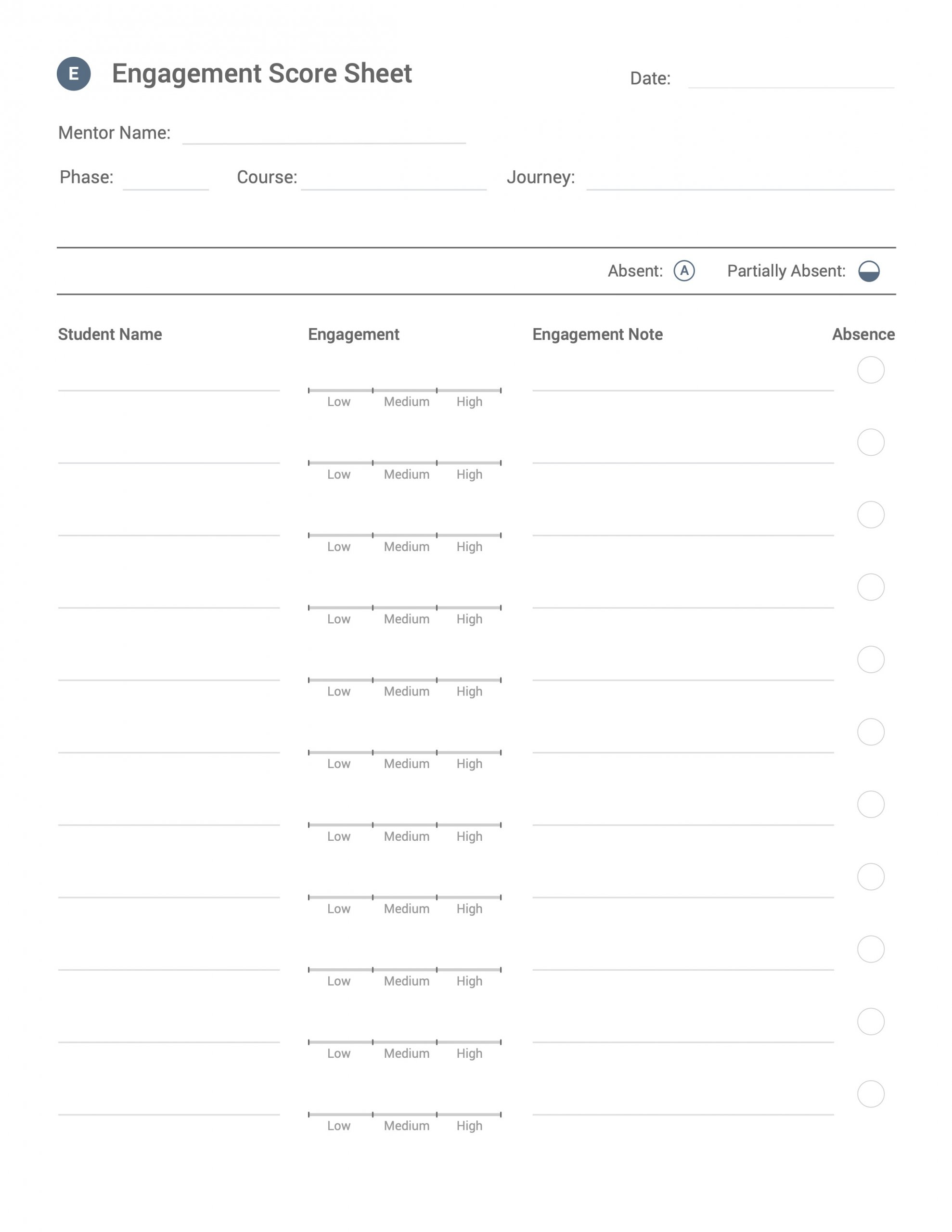
You can record engagement, artifact feedback, and skills checks on a piece of paper, in a spreadsheet, or a Google Form. You don’t have to have the Quest Forward LMS to go gradeless.
3. Minimize percentages, numbers, and points as much as possible. They don’t help students take action to improve. Just talk about the skills, improvements, and areas for growth.
4. Factor in trends, especially growth. Look at trends to help determine grades, if grades are required at your school. This way grades aren’t just about what the student knows. Instead, it’s about how much they engage, the effort they exhibit, and the growth they have demonstrated. At Quest Forward Academies, we’re required to have grades on term reports and transcripts. Most colleges still require grade data for their applications. We generate grades only at the ends of terms. We weigh recent work more heavily so growth and improvement are factored in appropriately.
5. Define what it means to do well in school. If it’s not about grades, what is it that students, teachers, and caregivers should focus on and talk about? For example, at Quest Forward Academies doing well in school looks like this:
- Students are engaged.
- Students demonstrate the intended learning outcomes.
- Students show skills growth.
- Students work efficiently.
- Students progress through the course.
These are expectations we reiterate to students and their families regularly. We ensure that we are on the same page and have the same vision of success.
6. Ask different questions. If you’re looking to deemphasize grades and focus more on learning you can start by encouraging students and their caregivers to ask different questions that align with your vision of success.
| Instead of... | Ask this... | |
|---|---|---|
| Student | What's my grade? | How am I doing? What can I do to improve? What am I learning and what do I still need to learn? Am I on track to meet my goals? |
| Caregiver | What grade does my child have? | How is my child doing? What do they need to do to improve? What are they learning? How can I best support them? Are they on track to meet their goals? |
School is about learning, not grades. Changing how we talk about success in school is a great first step to putting the focus where it should be: on learning! What are some initial steps you can take to start, or continue, to de-emphasize grades?
This post was originally published by Teachers Going Gradeless.

